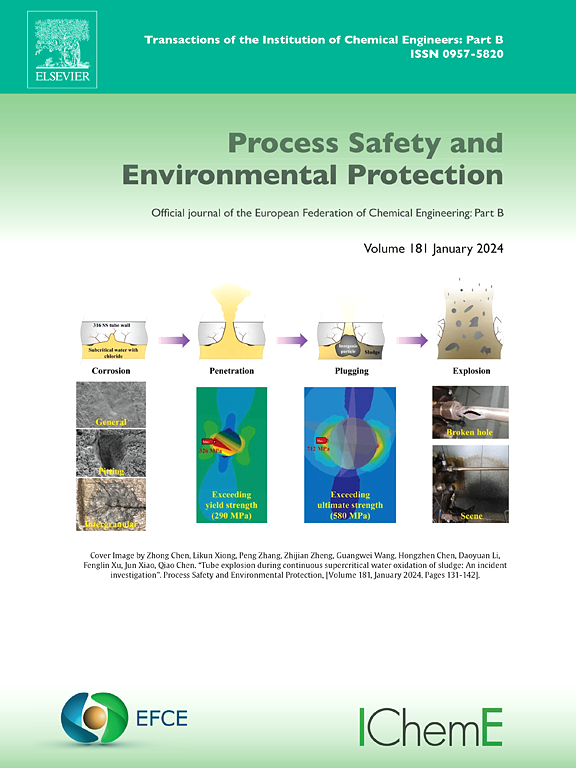Recovery of ferrous ammonium phosphate fertilizer from source-separated urine by electrocoagulation using response surface methodology (RSM)
IF 6.9
2区 环境科学与生态学
Q1 ENGINEERING, CHEMICAL
引用次数: 0
Abstract
This study focuses on the recovery of ferrous ammonium phosphate (FAP) from source-separated urine, presenting significant findings in waste management using the electrocoagulation method. The optimization of parameters such as current density (100–300 A/m2), initial pH (5−9), and process time (2–6 h) was carried out using the Box-Behnken method. The results revealed important insights regarding chemical oxygen demand (COD), ammonium (NH4+), and phosphate (PO4−3) removal efficiency. For instance, under a pH of 9 and a processing time of 4 h, the COD removal efficiency reached up to 56.4 %. The precipitation of NH4+ was achieved to be 70 % under a pH of 7 and a current density of 100 A/m². Moreover, the effects of these parameters on the removal of phosphate ions and the formation of ferrous ammonium phosphate (FAP) were observed. The characterization of the recovered FAP was performed using X-ray diffraction (XRD), scanning electron microscopy (SEM), and energy-dispersive X-ray analysis (EDX) analyses, providing a detailed examination of the material's structure. As a result, optimizing pH and current density in FAP production played a critical role in the effective removal of pollutants from source-separated urine. These findings contribute significantly to sustainable waste management and recovery processes.
求助全文
约1分钟内获得全文
求助全文
来源期刊

Process Safety and Environmental Protection
环境科学-工程:化工
CiteScore
11.40
自引率
15.40%
发文量
929
审稿时长
8.0 months
期刊介绍:
The Process Safety and Environmental Protection (PSEP) journal is a leading international publication that focuses on the publication of high-quality, original research papers in the field of engineering, specifically those related to the safety of industrial processes and environmental protection. The journal encourages submissions that present new developments in safety and environmental aspects, particularly those that show how research findings can be applied in process engineering design and practice.
PSEP is particularly interested in research that brings fresh perspectives to established engineering principles, identifies unsolved problems, or suggests directions for future research. The journal also values contributions that push the boundaries of traditional engineering and welcomes multidisciplinary papers.
PSEP's articles are abstracted and indexed by a range of databases and services, which helps to ensure that the journal's research is accessible and recognized in the academic and professional communities. These databases include ANTE, Chemical Abstracts, Chemical Hazards in Industry, Current Contents, Elsevier Engineering Information database, Pascal Francis, Web of Science, Scopus, Engineering Information Database EnCompass LIT (Elsevier), and INSPEC. This wide coverage facilitates the dissemination of the journal's content to a global audience interested in process safety and environmental engineering.
 求助内容:
求助内容: 应助结果提醒方式:
应助结果提醒方式:


